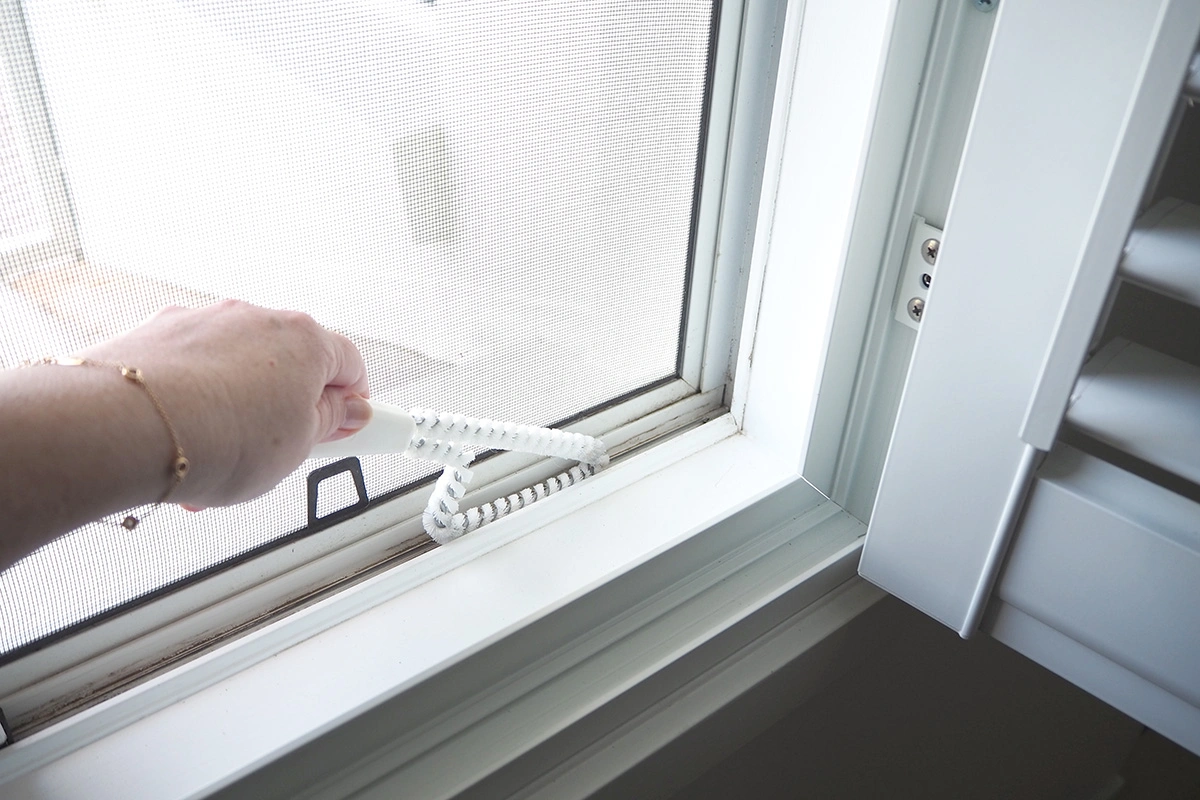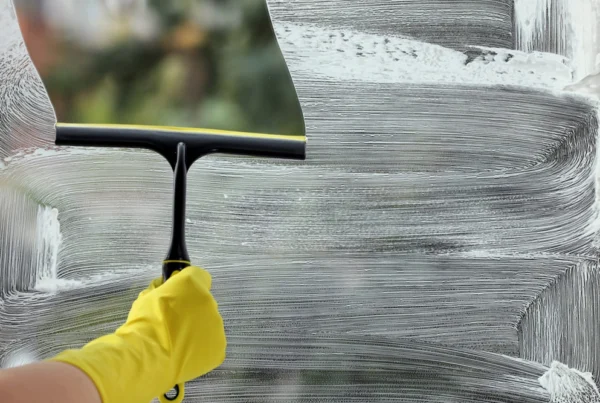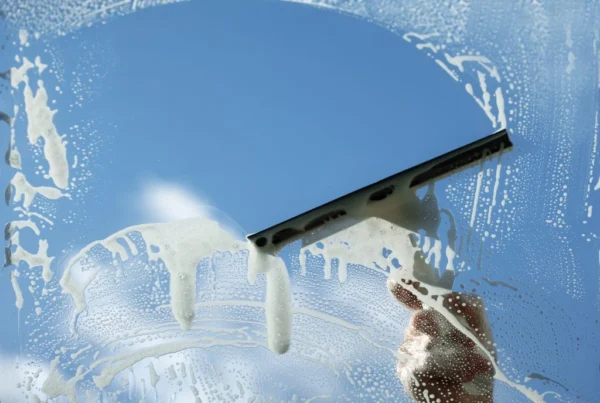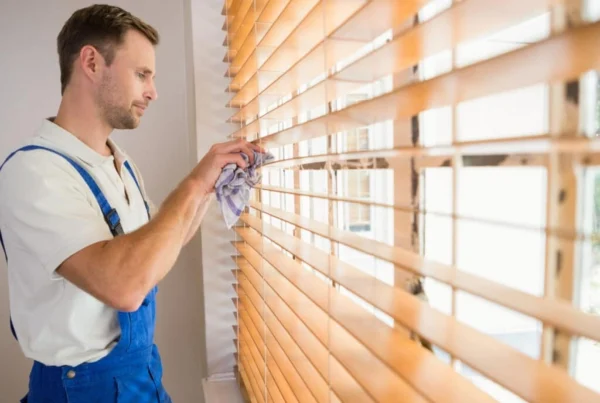Maintaining clean window screens is essential for both the aesthetic appeal of your home and the air quality inside it. While windows are often cleaned regularly, the screens that cover them are sometimes overlooked, even though they play an important role in filtering the air and blocking out insects. In this guide, we will show you how to clean your window screens without removing them, efficiently—whether or not they are removable—using simple tools and techniques. By following these tips, you can prolong the life of your screens and improve the overall cleanliness of your windows.
How to Clean a Non-Removable Window Screen
Cleaning window screens that cannot be removed may seem like a daunting task, but it’s easier than it sounds. Here’s a step-by-step process you can follow to clean your non-removable screens without taking them out.
1. Open Your Windows or Doors
To begin, open the window or door so you have full access to the screen. This gives you more flexibility and ensures that you can get to every part of the screen without obstruction. If you’re working on a door screen, make sure the area is clear of any furniture or obstacles that could make cleaning more difficult.
2. Remove Large Debris
Before you start cleaning, it’s a good idea to remove any large debris like leaves, twigs, or insects that may be caught in the screen. You can do this by hand or use a vacuum with a soft bristle brush attachment. Gently run the vacuum brush along the surface to lift off any loose dirt and prevent it from spreading around as you clean.
3. Use a Lint Roller for Light Cleaning
Once the larger debris is out of the way, take a lint roller and roll it gently over the surface of the screen. This method is excellent for picking up dust, cobwebs, pollen, and other fine particles. A lint roller is ideal for light cleaning, and while it may not tackle heavy grime, it’s a great tool for regular maintenance.
Be cautious when rolling the lint roller; avoid pressing too hard. If you apply too much pressure, you could damage the screen or stretch it, leading to potential holes or tears. It’s best to use a gentle, steady hand as you roll over the surface.
4. Refill the Lint Roller as Needed
As you roll the lint roller over the screen, you’ll notice the adhesive picking up dirt. Once the roller becomes dirty or loses its stickiness, simply replace the sticky sheet with a fresh one. For more extensive cleaning, you may need to repeat the process, changing out the roller sheets as necessary.
5. Use a Paint Roller for Larger Screens
If you need to clean larger or higher-up screens, such as those on doors or upper-floor windows, a paint roller can be an excellent tool. Attach a lint roller refill to the paint roller frame and use it to cover more area quickly. The extended handle of the paint roller allows you to reach higher places without the need for ladders or stools.
6. Optional Tools for More Thorough Cleaning
If you find that lint rollers aren’t enough for your needs, there are other tools you can use to ensure your screens are properly cleaned. Consider investing in a screen cleaner brush for more thorough scrubbing. These brushes are specifically designed to clean window screens without damaging them, and they’re great for removing stuck-on dirt and grime.
You can also use a vacuum with a bristle brush attachment for removing larger amounts of dust and debris. This will help you prepare the screen before you move on to using a lint roller or brush.
How to Clean a Screen Without Taking It Out
In many cases, you may not want to remove the window screen to clean it, either because it’s difficult to take out or simply because you prefer not to deal with the hassle. Fortunately, you can still clean your window screens effectively without removing them. Here’s a method that works well for most homeowners.
1. Open the Window or Door
Just as with the non-removable screen, start by opening the window or door to give yourself full access to the screen. This will make it easier to reach all areas of the screen and prevent you from missing spots.
2. Vacuum the Screen
Using a vacuum cleaner with a soft-bristle brush attachment, gently vacuum the surface of the screen. The vacuum will remove most of the dust, cobwebs, and loose dirt from the screen, making it easier to clean further.
3. Spray with Cleaning Solution
Prepare a simple cleaning solution using mild dish soap or vinegar mixed with warm water. You can either use a spray bottle or a sponge soaked in the solution to apply it to the screen. Spray the solution generously across the entire surface of the screen, making sure it’s evenly distributed.
4. Gently Scrub with a Cloth or Sponge
After applying the cleaning solution, use a soft cloth or sponge to gently scrub the screen. Avoid using excessive pressure, as this can damage the screen material. Focus on areas with visible grime or buildup. Be sure to rinse the cloth or sponge regularly to avoid spreading dirt back onto the screen.
5. Rinse and Dry
Once you’ve scrubbed the screen, rinse it with clean water to remove the cleaning solution. You can use a hose with a low-pressure setting for an efficient rinse. If a hose isn’t available, gently rinse the screen under a shower or in a sink if possible. Afterward, allow the screen to air dry. Leave the window or door open to aid in the drying process and prevent any water from collecting on the sill.
What is the Best Thing to Clean Window Screens With?
When it comes to cleaning window screens, the best tools are those that gently remove dust and dirt without damaging the screen material. Here are a few options:
- Lint Roller: Great for light cleaning and regular maintenance. It’s simple, quick, and effective at picking up dust and debris.
- Vacuum with Bristle Brush Attachment: Ideal for removing larger dust particles and cobwebs before cleaning with a cloth or sponge.
- Screen Cleaner Brush: These brushes are designed specifically for cleaning screens, making them an excellent choice for more thorough scrubbing.
- Paint Roller: For larger or higher screens, a paint roller with a lint roller refill can help clean more areas quickly.
How Do You Clean Windows Without Removing Fly Screens?
If you need to clean your windows but don’t want to remove the fly screens, there are a few options:
- Vacuum: Use a vacuum cleaner with a soft bristle brush to remove dust and debris from the screen without damaging it.
- Spray Bottle and Cloth: Fill a spray bottle with a mild cleaning solution and spray it directly onto the screen. Then, use a soft cloth or sponge to gently wipe the screen.
- Low-Pressure Hose: If possible, use a hose with a low-pressure setting to rinse the screen clean. This helps to remove grime without damaging the material.
When to Clean Window Screens
For most homeowners, window screens should be cleaned at least twice a year, typically during the spring and fall. However, if you live in a particularly dusty or windy environment, you may need to clean them more frequently. Regular cleaning helps maintain the function of the screen and prevents dirt from building up over time.
Deep Cleaning Method (When Screens Are Removable)
If you do decide to remove your window screens for a deeper clean, here’s how to do it:
- Prepare a Cleaning Solution: Mix ¼ cup of dish detergent or vinegar with ½ gallon of warm water.
- Remove the Screens: Gently remove the screens from the window frame and lay them flat or prop them up.
- Wash the Screens: Using a soft sponge or dishcloth, gently scrub the screen with the cleaning solution. Avoid pressing too hard to prevent damage.
- Rinse with Clean Water: Use a low-pressure hose to rinse the screens thoroughly. If you don’t have a hose, rinse the screens in a bathtub or shower.
- Dry the Screens: Allow the screens to dry completely before reattaching them to the window.
Why Window Screen Cleaning Is Important
Cleaning your window screens is important for several reasons:
- Improves Air Quality: Dust, dirt, and pollen that accumulate on window screens can be dispersed into the air, affecting your indoor air quality. Regular cleaning reduces allergens and improves the air you breathe.
- Extends Screen Lifespan: The buildup of dirt, salt, and bio-matter on screens can cause wear and tear, shortening their lifespan. Regular cleaning helps protect your screens and keep them in good condition.
- Maintains Window Cleanliness: Dirty screens will transfer dirt and debris to your windows, making them harder to clean. Keeping your screens clean ensures that your windows stay clear and spotless.
Professional Screen Repair
While regular cleaning helps maintain your screens, there may come a time when they need repairs. Common issues include tears, bent frames, or warping. If your screen is beyond cleaning, consider seeking professional repair services to fix any damage and extend the lifespan of your screens.
Conclusion
Keeping your window screens clean doesn’t have to be a chore. Whether you’re using a lint roller for light cleaning or following a more thorough cleaning process, regular maintenance is key to ensuring the longevity of your screens and windows. By cleaning your screens at least twice a year and using the right tools, you can enjoy clearer windows, better air quality, and a more pleasant living environment.
For all your window screen cleaning and house cleaning needs, don’t hesitate to contact us at ProClean. Our expert team is ready to help maintain the cleanliness and comfort of your home with our professional cleaning services. Reach out today and let the best house cleaning service Richmond team take care of the dirty work for you!
Please see our social media pages below:
Find out more articles that can help you below:
How to Clean Water Spots on Windows
[/fsn_text][/fsn_column][/fsn_row]




